Evaluation of Siltation Degree of Permeable Asphalt Pavement and Detection of Noise Reduction Degree
Abstract
Featured Application
Abstract
1. Introduction
2. Materials and Equipment
2.1. Experimental Materials
2.1.1. Stone
2.1.2. Asphalt
2.1.3. Blockage
2.2. Experimental Equipment
2.2.1. Moving Water Scourer
2.2.2. Noise Measuring Instrument—Online Digital Noise Meter
2.2.3. New Type Rutting Test Machine
2.3. Asphalt Mixture Preparation
3. Experimental Method
3.1. Characteristics of Blocked Voids in Permeable Asphalt Pavement
- The number of connected pores in the specimens with high porosity increases significantly, the width of the pores is generally larger, and the length of the pores with large width is also large.
- The shapes of the pores are different, and there is no rule to speak of, but generally speaking, the width of the pores does not exceed 5 mm, and most of the pore widths are concentrated between 1–4 mm.
- The specimens with lower porosity also have pores with large widths, but the pores in the dense specimens are mostly not connected due to the high degree of compaction and are invalid pores.
- In the specimens with large porosity, the contact points between the stones are obviously less than the specimens with low porosity, and the large particles of stones are not completely filled.
3.2. Mesoscopic Simulation Test of Blocking Behavior
3.3. Formatting of Mathematical Components
3.4. Asphalt Pavement Noise Detection Test
3.5. Noise Detection Test before and after Blockage of Permeable Asphalt Pavement
- The gaps in each part of the testing machine were filled with soft and porous sound-absorbing materials in order to reduce the influence of excessive mechanical noise on the experimental results during the operation of the testing machine.
- The noise meter was connected to the computer with a data cable, and the range was selected automatically (30 dB–130 dB).
- The sensor of the noise meter was equipped with an anti-interference sponge ball, which was to reduce the interference of wind and human voices in the environment. Then we placed the sensor in a fixed position on the test road, with the sensor head flush with the road.
- After the experiment started, when the tires were rotating stably, we started the real-time measurement function in the software, and stopped after timing for one minute.
4. Results and Discussion
4.1. Meso-Analysis of Blocking Behavior
4.1.1. Simulation of the Influence of Each Particle Size on the Blocking Process of Asphalt Mixture
4.1.2. Analysis of Blockage of Full-Graded Blockage
4.1.3. The Role of Water Flow
4.1.4. The Three Stages of the Blockage Process
4.1.5. Location and Depth of Blockage
4.2. Change in Permeability of Asphalt Mixture During Blockage
4.2.1. The Quality of Porous Asphalt Concrete (PAC) Marshall Specimens Varies with the Number of Blockages
4.2.2. The Porosity of the PAC Marshall Specimen Varies with the Number of Blockages
4.2.3. The Variation of the Permeability Coefficient of the PAC Marshall Specimen with the Number of Blockages
4.3. Analysis of Noise Reduction Effect of Permeable Asphalt Pavement
4.4. Noise Analysis before and after Blockage of Permeable Asphalt Pavement
5. Conclusions
- Through the mesoscopic simulation process of blocking behavior, it was found that: the clogging process can be roughly divided into three stages, (1) early fast clogging stage, (2) middle slow clogging stage, (3) terminal clogging stable stage. According to the position of the blockage, it can be divided into shallow blockage on the surface and deep blockage on the inside. The role of water flow in the blockage process cannot be ignored. It is the main factor that promotes the lateral movement of the blockage, sometimes promoting blockage and sometimes slowing it down.
- The critical particle size of the blockage is particles within 0.3–0.6 mm. Particles above 1.18 mm gather on the road surface and it is difficult for them to enter the road surface. The particles below 0.03 mm are basically washed away by the water flow and cannot form a large blockage. Therefore, when cleaning the blockage of the permeable asphalt pavement, the 0.3–0.6 mm particles should be considered.
- The simulated blockage test of the PAC-13 Marshall specimen found that: during the clogging process, the weight, porosity, and water permeability of the test piece became larger as the degree of clogging deepened, and the range of change was first large and then small. This shows that the early blockage occupies a larger proportion.
- The tire drop test in the laboratory verified that the permeable asphalt pavement had better noise reduction performance than the ordinary densely distributed pavement.
- According to the noise change in the process of indoor simulation of road blockage, a new method of non-destructive detection of permeable road blockage is proposed.
Author Contributions
Funding
Institutional Review Board Statement
Informed Consent Statement
Acknowledgments
Conflicts of Interest
References
- Liu, Y.; Cheng, X.; Yang, Z. Effect of Mixture Design Parameters of Stone Mastic Asphalt Pavement on Its Skid Resistance. Appl. Sci. 2019, 9, 5171. [Google Scholar] [CrossRef]
- Pérez-Acebo, H.; Gonzalo-Orden, H.; Findley, D.J.; Rojí, E. A skid resistance prediction model for an entire road network. Constr. Build. Mater. 2020, 262, 120041. [Google Scholar] [CrossRef]
- Ma, X.; Wang, H.; Zhou, P. Novel Gradation Design of Porous Asphalt Concrete with Balanced Functional and Structural Performances. Appl. Sci. 2020, 10, 7019. [Google Scholar] [CrossRef]
- Volder, A.; Watson, T.; Viswanathan, B. Potential use of pervious concrete for maintaining existing mature trees during and after urban development. Urban For. Urban Green. 2009, 8, 249–256. [Google Scholar] [CrossRef]
- Fassman, E.; Blackbourn, S. Urban Runoff Mitigation by a Permeable Pavement System over Impermeable Soils. J. Hydrol. Eng. 2010, 15, 475–485. [Google Scholar] [CrossRef]
- Gilbert, J.K.; Clausen, J.C. Stormwater runoff quality and quantity from asphalt, paver, and crushed stone driveways in Connecticut. Water Res. 2006, 40, 826–832. [Google Scholar] [CrossRef]
- Gomez-Ullate, E.; Castillo-Lopez, E.; Castro-Fresno, D.; Bayon, J.R. Analysis and Contrast of Different Pervious Pavements for Management of Storm-Water in a Parking Area in Northern Spain. Water Resour. Manag. 2010, 25, 1525–1535. [Google Scholar] [CrossRef]
- Hibbs, B.J.; Sharp, J.J.M. Hydrogeological Impacts of Urbanization. Environ. Eng. Geosci. 2012, 18, 3–24. [Google Scholar] [CrossRef]
- Imran, H.; Akib, S.; Karim, M.R. Permeable pavement and stormwater management systems: A review. Environ. Technol. 2013, 34, 2649–2656. [Google Scholar] [CrossRef]
- Kuruppu, U.; Rahman, A.; Rahman, M.A. Permeable pavement as a stormwater best management practice: A review and discussion. Environ. Earth Sci. 2019, 78, 327. [Google Scholar] [CrossRef]
- Roseen, R.M.; Ballestero, T.P.; Houle, J.J.; Briggs, J.F.; Houle, K.M. Water Quality and Hydrologic Performance of a Porous Asphalt Pavement as a Storm-Water Treatment Strategy in a Cold Climate. J. Environ. Eng. 2012, 138, 81–89. [Google Scholar] [CrossRef]
- Scholz, M.; Grabowiecki, P. Review of permeable pavement systems. Build. Environ. 2007, 42, 3830–3836. [Google Scholar] [CrossRef]
- Wilson, C.E.; Hunt, W.F.; Winston, R.J.; Smith, P. Comparison of Runoff Quality and Quantity from a Commercial Low-Impact and Conventional Development in Raleigh, North Carolina. J. Environ. Eng. 2015, 141, 05014005. [Google Scholar] [CrossRef]
- Mampearachchi, W.; Masakorala, S.; Umasangar, K. Aggregate interlocking of open-graded friction courses with compaction effort. J. Natl. Sci. Found. Sri Lanka 2019, 47, 139. [Google Scholar] [CrossRef]
- Dai, Z.; Shen, J.; Shi, P.; Zhu, H.; Li, X. Nano-sized morphology of asphalt components separated from weathered asphalt binders. Constr. Build. Mater. 2018, 182, 588–596. [Google Scholar] [CrossRef]
- Chen, J.; Yin, X.; Sha, A.; Ding, Y. Evaluation of durability and functional performance of porous polyurethane mixture in porous pavement. J. Clean. Prod. 2018, 188, 12–19. [Google Scholar] [CrossRef]
- Luo, S.; Qian, Z.-D.; Xue, Y.-C. Performance evaluation of open-graded epoxy asphalt concrete with two nominal maximum aggregate sizes. J. Cent. South Univ. 2015, 22, 4483–4489. [Google Scholar] [CrossRef]
- Chui, T.F.M.; Liu, X.; Zhan, W. Assessing cost-effectiveness of specific LID practice designs in response to large storm events. J. Hydrol. 2016, 533, 353–364. [Google Scholar] [CrossRef]
- Zhao, X.; Yang, Y. Research on Permeable Pavement Void Characteristics under Sponge City Thinking. Highw. Traffic Technol. 2016, 5, 192–193. [Google Scholar]
- Elvik, R.; Greibe, P. Road safety effects of porous asphalt: A systematic review of evaluation studies. Accid. Anal. Prev. 2005, 37, 515–522. [Google Scholar] [CrossRef]
- Coughlin, J.P.; Campbell, C.D.; Mays, D.C. Infiltration and Clogging by Sand and Clay in a Pervious Concrete Pavement System. J. Hydrol. Eng. 2012, 17, 68–73. [Google Scholar] [CrossRef]
- Deo, O.; Sumanasooriya, M.; Neithalath, N. Permeability Reduction in Pervious Concretes due to Clogging: Experiments and Modeling. J. Mater. Civ. Eng. 2010, 22, 741–751. [Google Scholar] [CrossRef]
- Nguyen, D.H.; Boutouil, M.; Sebaibi, N.; Baraud, F.; Leleyter, L. Durability of pervious concrete using crushed seashells. Constr. Build. Mater. 2017, 135, 137–150. [Google Scholar] [CrossRef]
- Chopra, M.; Kakuturu, S.; Ballock, C.; Spence, J.; Wanielista, M. Effect of Rejuvenation Methods on the Infiltration Rates of Pervious Concrete Pavements. J. Hydrol. Eng. 2010, 15, 426–433. [Google Scholar] [CrossRef]
- Guan, Y. Research on Water Permeability Mechanism and Structure Design of Macroporous Asphalt Pavement; Beijing Jiaotong University: Beijing, China, 2008. [Google Scholar]
- Sun, H. Design of Permeable Asphalt Pavement Structure Layer Based on Heavy Metal Control; Nanjing Forestry University: Nanjing, China, 2014. [Google Scholar]
- Kang, A.; Xu, X.; Kou, C. Experimental study on void blocking of permeable asphalt mixture based on improved testing method. Road Constr. 2017, 5, 102–105. [Google Scholar]
- Montes, F.; Haselbach, L. Measuring Hydraulic Conductivity in Pervious Concrete. Environ. Eng. Sci. 2006, 23, 960–969. [Google Scholar] [CrossRef]
- Kia, A.; Wong, H.S.; Cheeseman, C. Clogging in permeable concrete: A review. J. Environ. Manag. 2017, 193, 221–233. [Google Scholar] [CrossRef]
- Lyons, K.R.; Putman, B.J. Laboratory evaluation of stabilizing methods for porous asphalt mixtures. Constr. Build. Mater. 2013, 49, 772–780. [Google Scholar] [CrossRef]
- Vancura, M.E.; Macdonald, K.; Khazanovich, L. Location and Depth of Pervious Concrete Clogging Material before and after Void Maintenance with Common Municipal Utility Vehicles. J. Transp. Eng. 2012, 138, 332–338. [Google Scholar] [CrossRef]
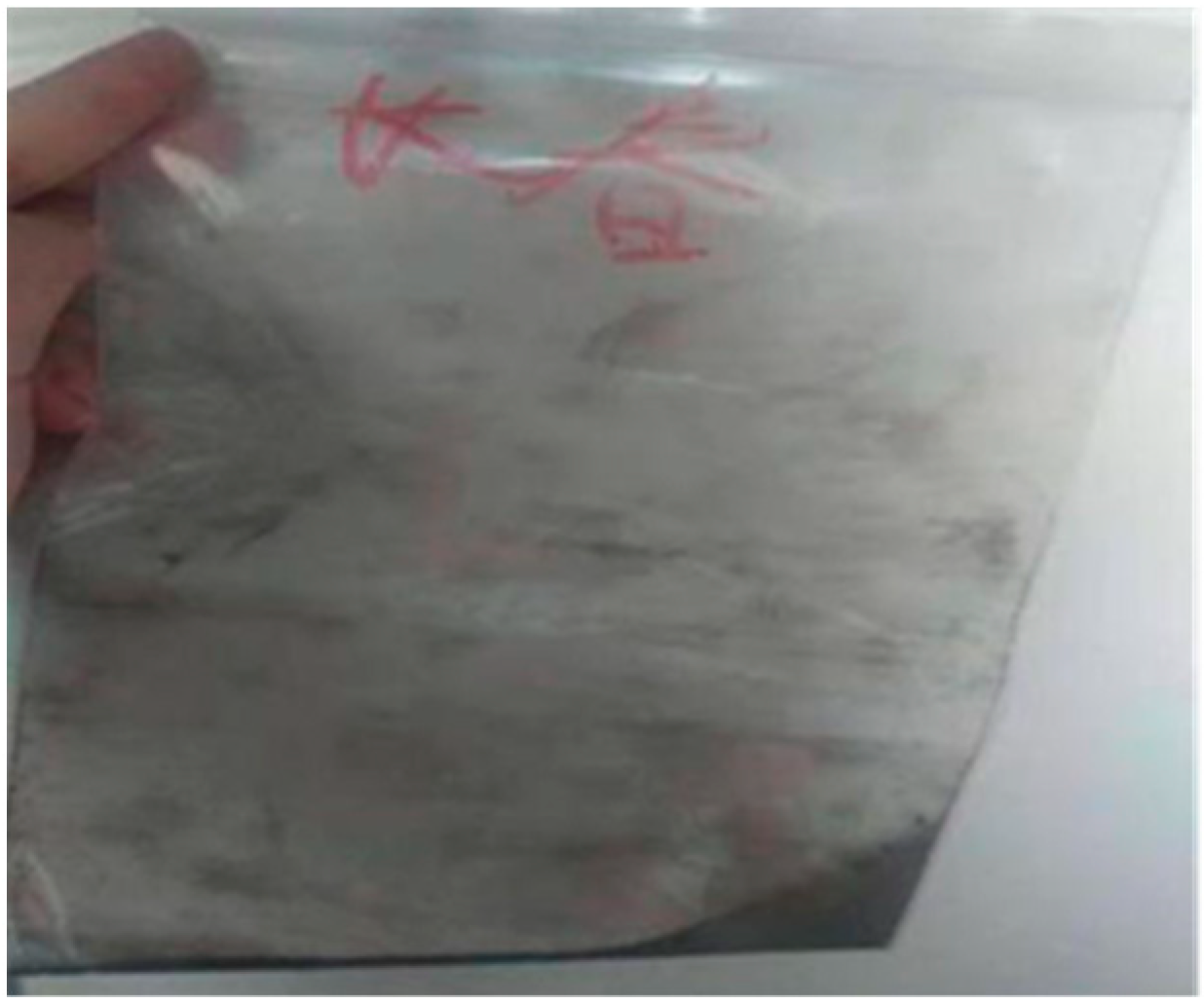
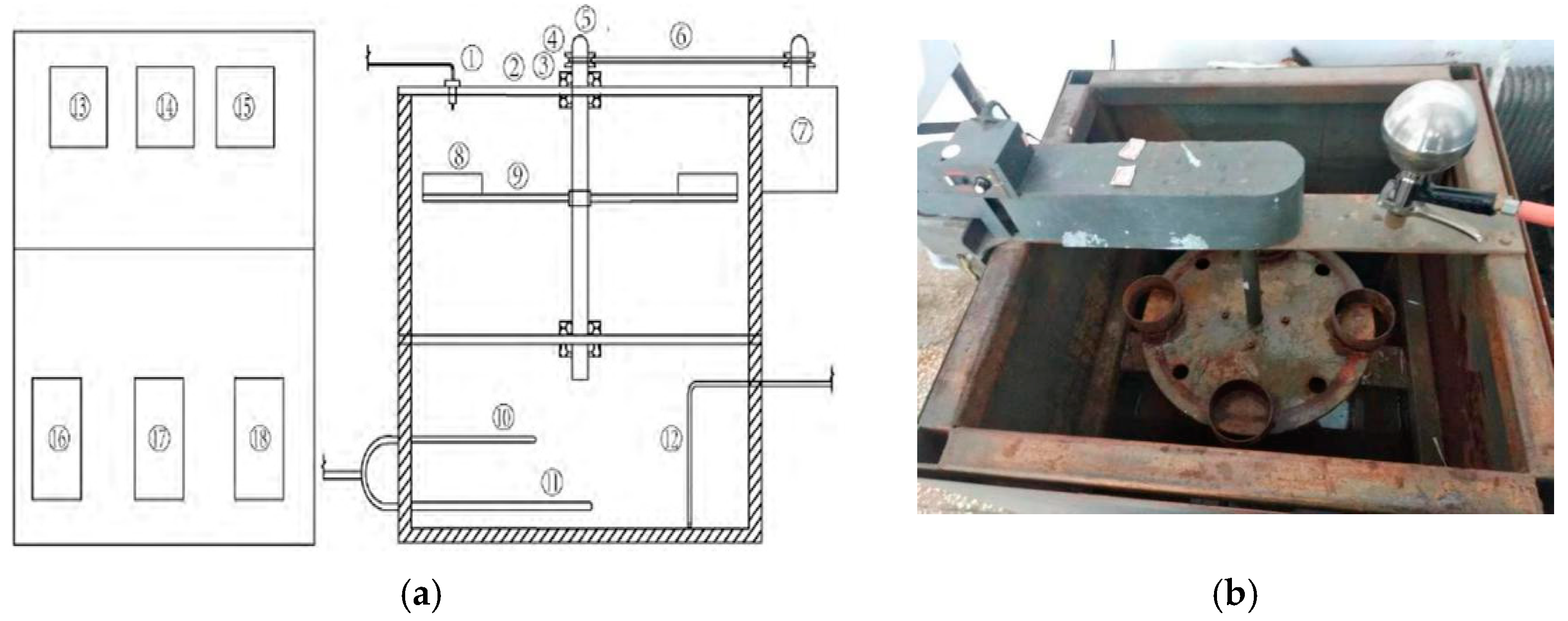
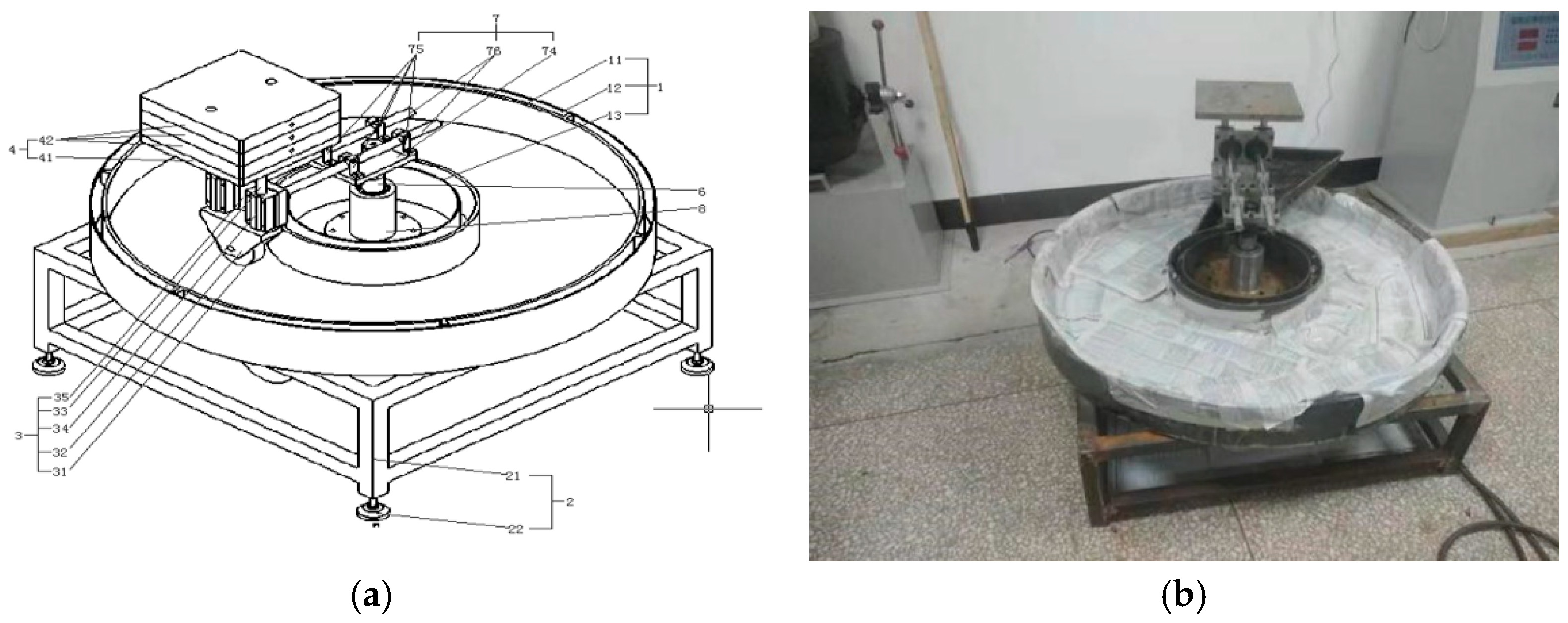


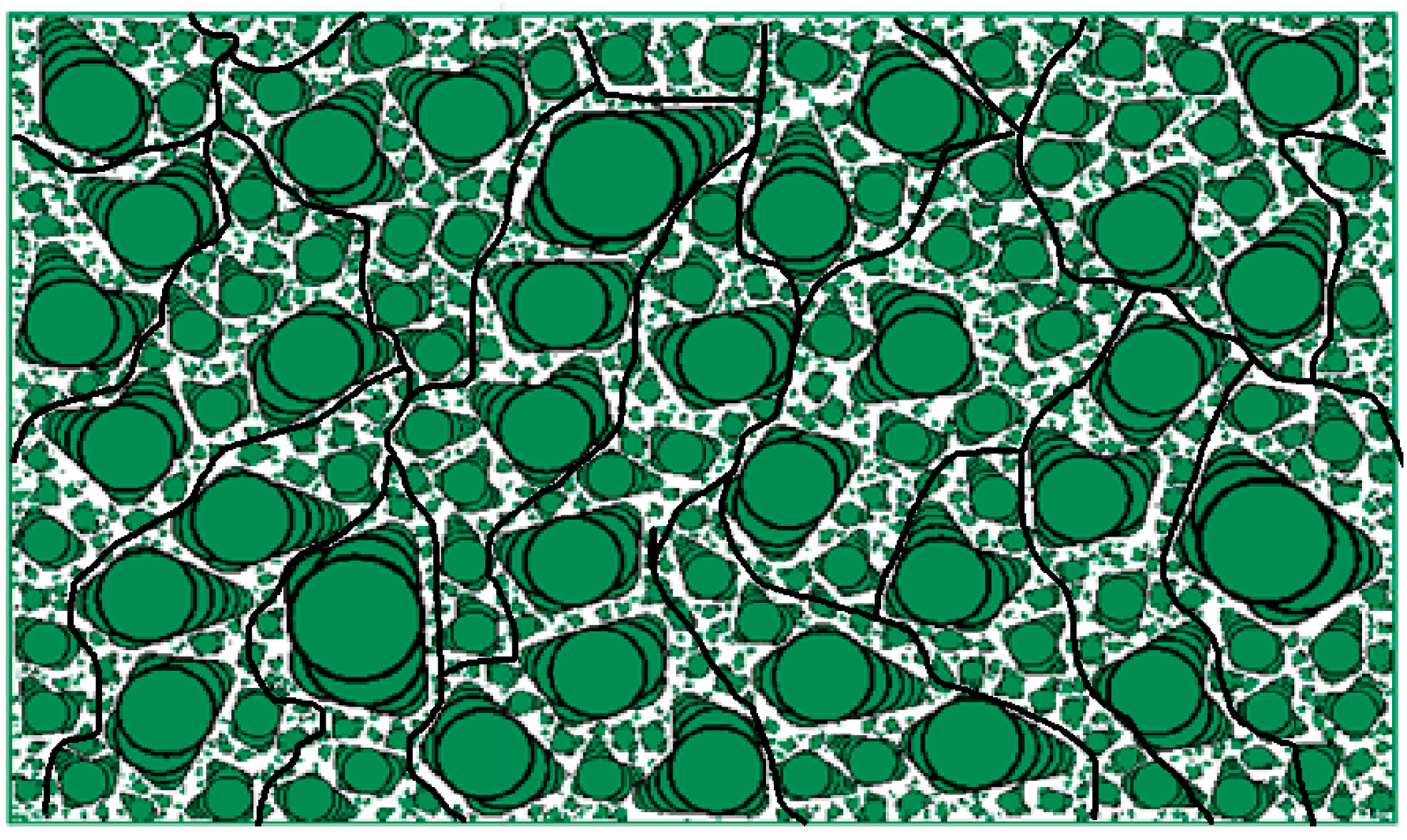
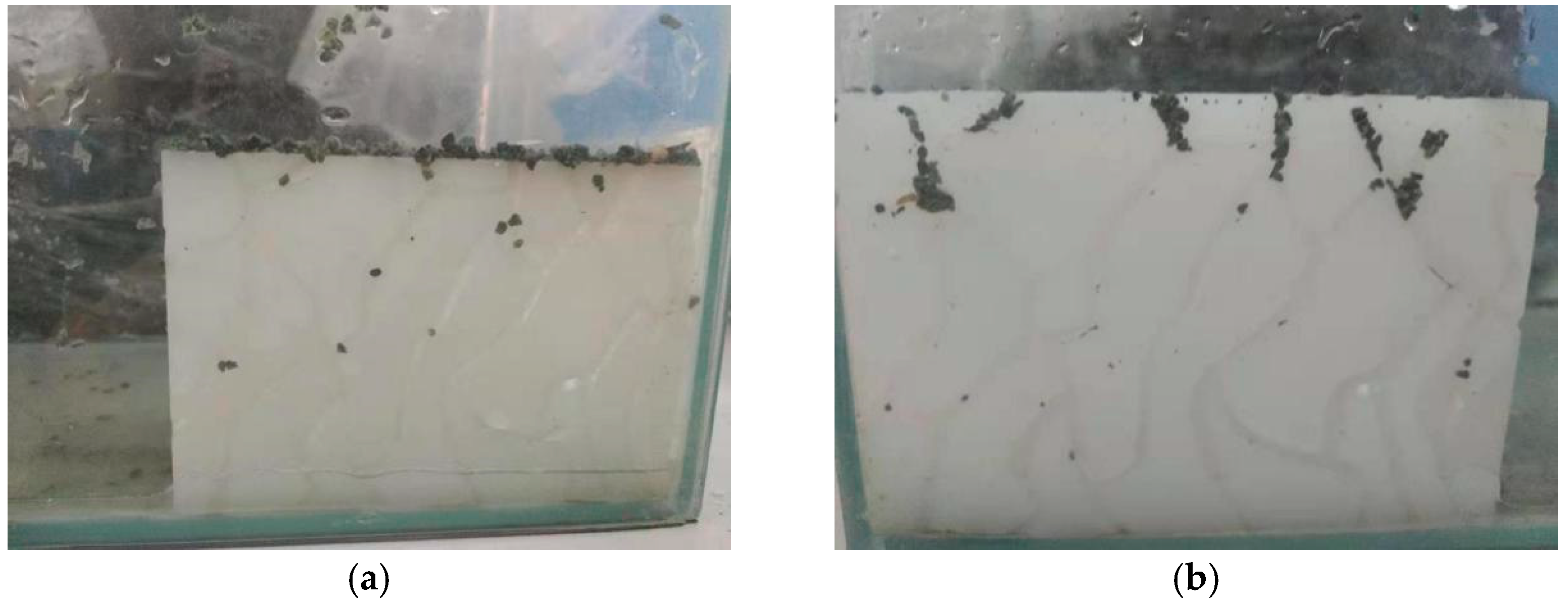
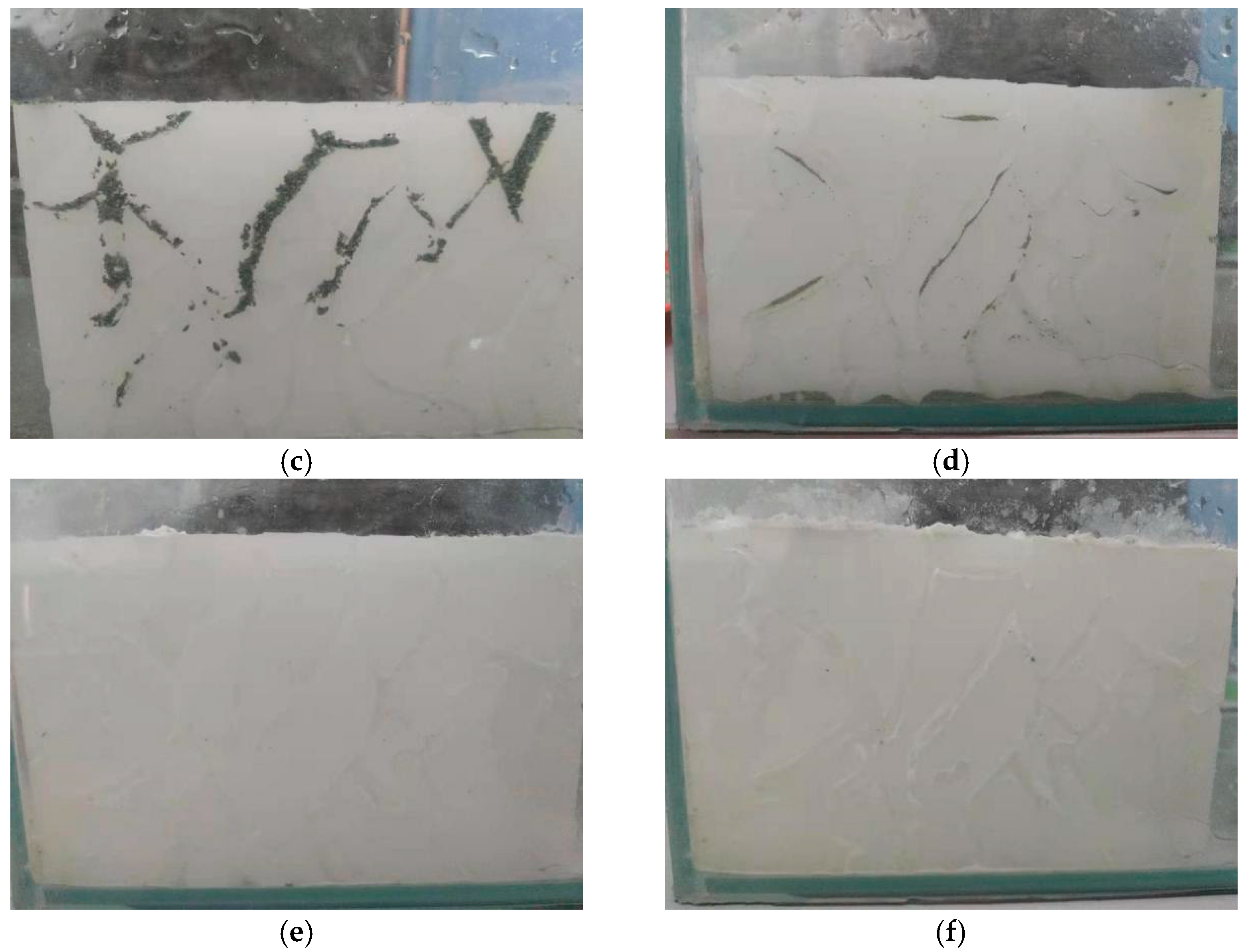
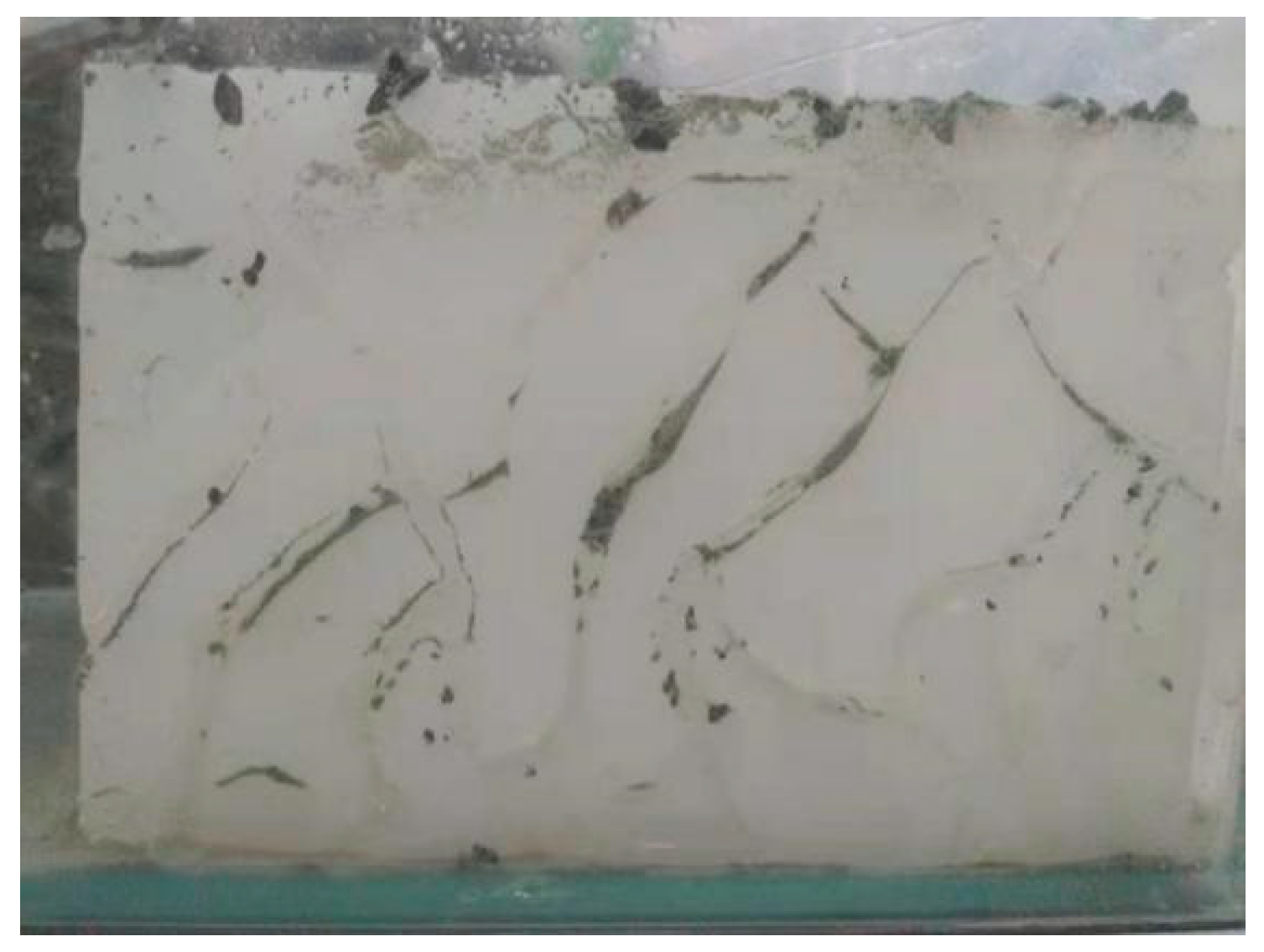
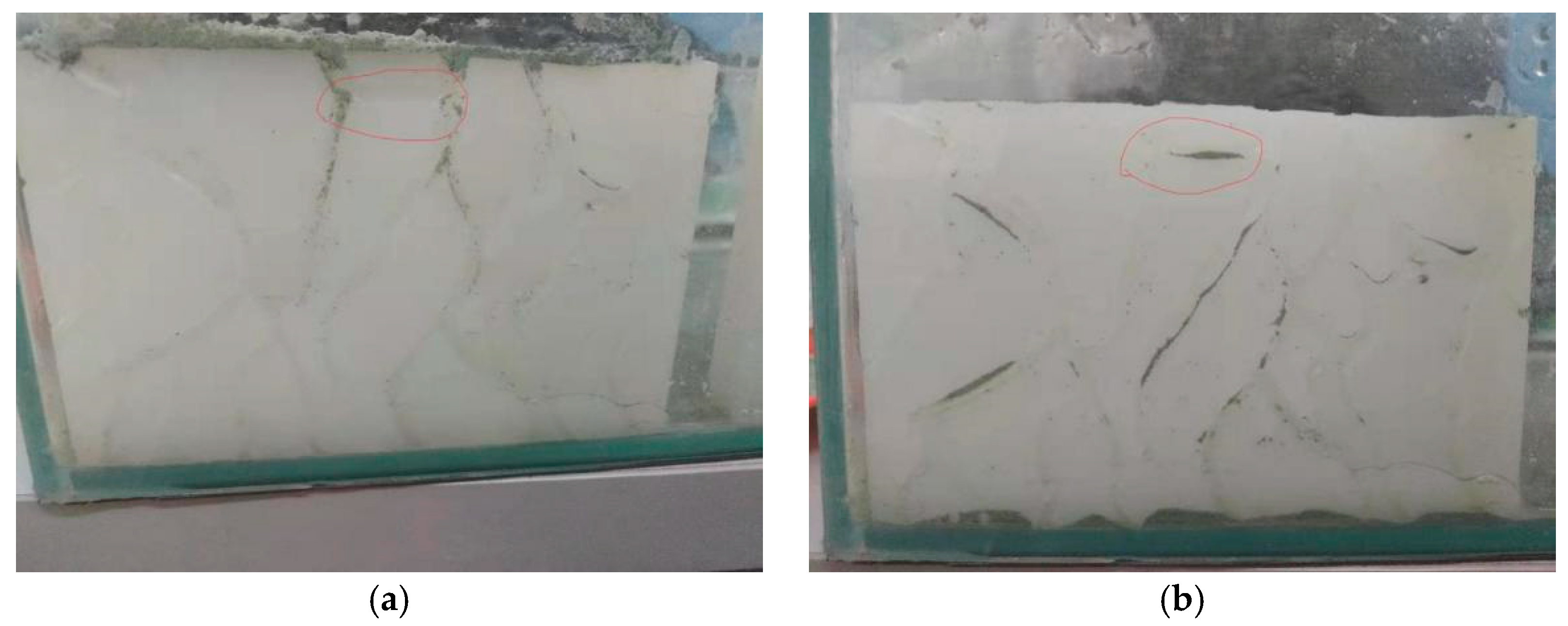
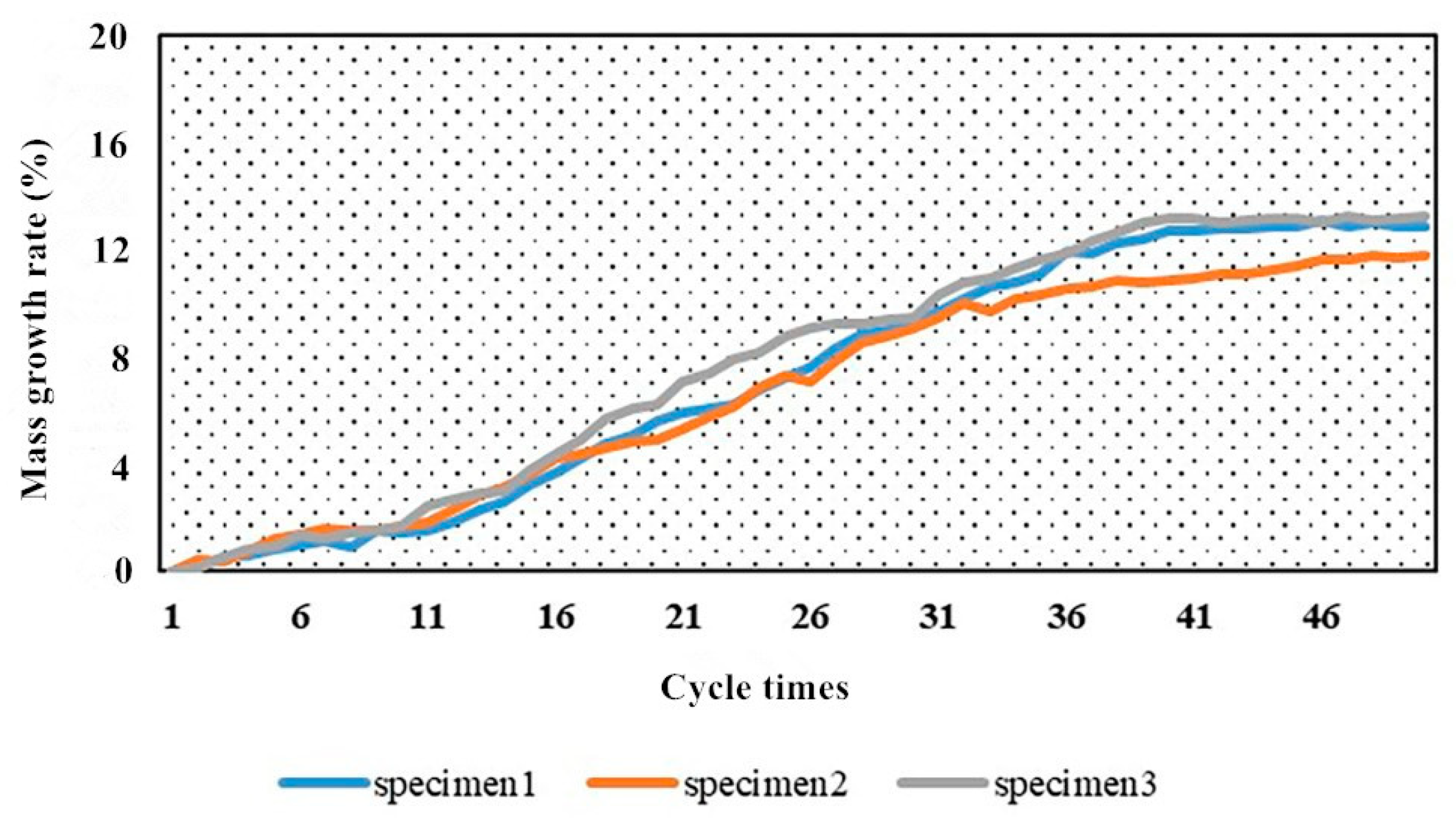
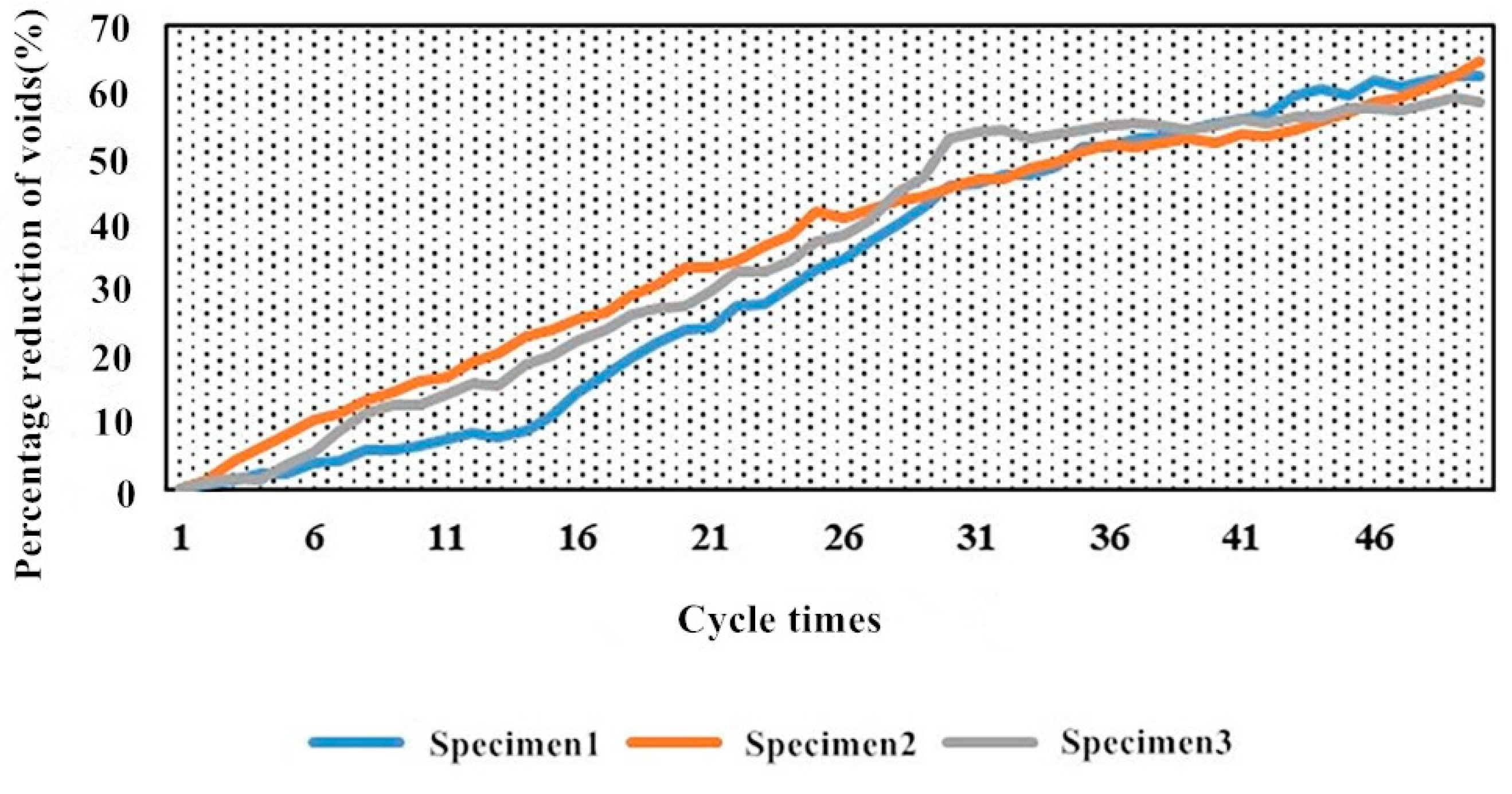


| Test Items | Unit | Required Value | Test Results |
|---|---|---|---|
| Stone crushing Value | % | ≤26 | 21.2 |
| Los angeles abrasion loss | % | ≤30 | 25 |
| Apparent density | g/cm3 | ≥2.60 | 2.79 |
| Water absorption | % | ≤2.0 | 0.61 |
| Asphalt adhesion | grade | ≥5 | 6 |
| Robustness | % | ≤12 | 10 |
| Needle-like particle content (mixture) The particle size is greater than 4.75 Particle size 2.36 ~4.75 | % | ≤14 | 9.3 |
| % | ≤10 | 6 | |
| % | ≤18 | 12 | |
| Aggregate larger than 4.75 is obtained after washing method <0.075 particle content | % | ≤1.0 | 0.6 |
| 2.36 ~4.75 aggregates obtained after washing method <0.075 particle content | % | ≤3.0 | 2.1 |
| Soft stone content | % | ≤3 | 2 |
| Pilot Projects | Unit | Required Value | Measured Value | Test Procedure | Remarks |
|---|---|---|---|---|---|
| Penetration 25 °C | 0.1 mm | ≥40 | 56 | T0604 | qualified |
| Softening Point | °C | ≥80 | 85 | T0606 | qualified |
| Ductility 15 °C | cm | ≥80 | 81.4 | T0605 | qualified |
| Ductility 5 °C | cm | ≥30 | 33 | T0605 | qualified |
| Dynamic viscosity at 60 °C | ≥20,000 | 101,000 | T0620 | qualified | |
| Viscosity | ≥20 | 22 | T0624 | qualified | |
| Toughness | ≥15 | 18 | T0624 | qualified | |
| Film heating penetration ratio | % | ≥65 | 72.3 | T0609 | qualified |
| Loss of film heating quality | % | ≤0.6 | 0.22 | T0609 | qualified |
| Element Name | Content (%) | Element Name | Content (%) |
|---|---|---|---|
| O | 60.960 | Ca | 7.450 |
| Na | 1.475 | Ti | 0.487 |
| Mg | 1.158 | Mn | 0.068 |
| Al | 4.819 | Fe | 3.400 |
| Si | 17.675 | Zn | 0.041 |
| P | 0.099 | Sr | 0.017 |
| S | 0.279 | Zr | 0.018 |
| Cl | 0.159 | Ba | 0.113 |
| K | 1.770 | Pb | 0.012 |
| Particle Size | <0.075 | 0.075–0.15 | 0.15–0.3 | 0.3–0.6 | 0.6–1.18 | 1.18–2.36 |
|---|---|---|---|---|---|---|
| Proportion | 23 | 21 | 24 | 21 | 7 | 4 |
| Measuring Range | 30–130 dB |
|---|---|
| Frequency Response | 31.5–8500 Hz |
| Accuracy | 1.5 dB |
| Resolution | 0.1 dB |
| Measuring Gear | 30–80, 50–100, 60–110, 80–130, 30–130 |
| Dynamic Range | 50/100 dB |
| Frequency Weighting Characteristics | A/C The characteristics of noise that humans can hear and mechanical noise |
| Sampling Rate | 20 Times/sec |
| Dynamic Characteristics | FAST/SLOW |
| Working Voltage | 6 V |
| 16 | 13.2 | 9.5 | 4.75 | 2.36 | 1.18 | 0.6 | 0.3 | 0.15 | 0.075 | |
|---|---|---|---|---|---|---|---|---|---|---|
| Gradation | 100 | 96 | 65 | 14 | 13 | 10 | 8 | 6 | 5.5 | 4.5 |
| Specimen Number | Initial Dry Weight (g) | Initial Void Ratio (%) | Initial Permeability Coefficient (cm/s) |
|---|---|---|---|
| 1 | 1217 | 22.3 | 0.27 |
| 2 | 1253 | 20.9 | 0.23 |
| 3 | 1200 | 21.2 | 0.25 |
| Point | Thickness (cm) | Void Ratio (%) |
|---|---|---|
| 1 | 4.1 | 19.8 |
| 2 | 4.0 | |
| 3 | 4.2 | |
| 4 | 3.9 |
| Type of Rut | Noise (dB) | Average Value (dB) | ||
|---|---|---|---|---|
| AC-13 SMA PAC-13 | 81.0 80.6 78.0 | 80.2 79.8 79.1 | 80.3 79.9 78.4 | 80.5 80.1 78.5 |
| Blocking Times | Blockage Quality (g) | Mass Growth Rate (%) | Pavement Noise Average (dB) |
|---|---|---|---|
| 0 | 0 | 0 | 74.36 |
| 1 | 1000 | 1.85 | 75.27 |
| 2 | 1000 | 3.70 | 75.98 |
| 3 | 1000 | 5.56 | 77.47 |
| 4 | 1000 | 7.41 | 78.02 |
| 5 | 493 | 8.32 | 78.46 |
Publisher’s Note: MDPI stays neutral with regard to jurisdictional claims in published maps and institutional affiliations. |
© 2020 by the authors. Licensee MDPI, Basel, Switzerland. This article is an open access article distributed under the terms and conditions of the Creative Commons Attribution (CC BY) license (http://creativecommons.org/licenses/by/4.0/).
Share and Cite
Chen, S.; Lin, X.; Zheng, C.; Guo, X.; Chen, W. Evaluation of Siltation Degree of Permeable Asphalt Pavement and Detection of Noise Reduction Degree. Appl. Sci. 2021, 11, 349. https://doi.org/10.3390/app11010349
Chen S, Lin X, Zheng C, Guo X, Chen W. Evaluation of Siltation Degree of Permeable Asphalt Pavement and Detection of Noise Reduction Degree. Applied Sciences. 2021; 11(1):349. https://doi.org/10.3390/app11010349
Chicago/Turabian StyleChen, Shuang, Xuechun Lin, Chuanfeng Zheng, Xuedong Guo, and Wuxing Chen. 2021. "Evaluation of Siltation Degree of Permeable Asphalt Pavement and Detection of Noise Reduction Degree" Applied Sciences 11, no. 1: 349. https://doi.org/10.3390/app11010349
APA StyleChen, S., Lin, X., Zheng, C., Guo, X., & Chen, W. (2021). Evaluation of Siltation Degree of Permeable Asphalt Pavement and Detection of Noise Reduction Degree. Applied Sciences, 11(1), 349. https://doi.org/10.3390/app11010349




